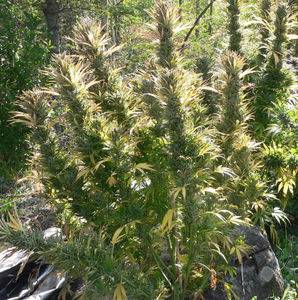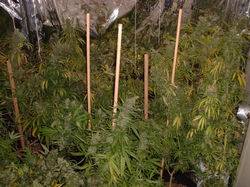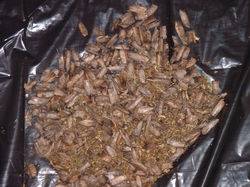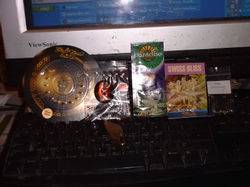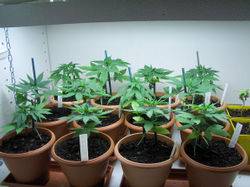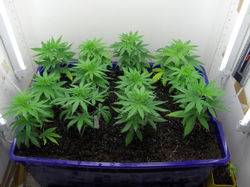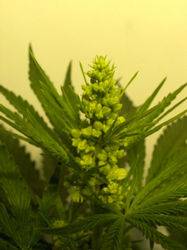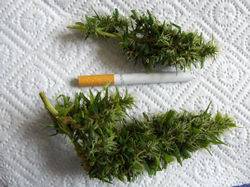G
Guest
It's great to see this thread revived. I'm still looking for my ultimate sativa! I tried Odin's Hammer (acapulco gold x kodiak gold, 80% sativa) but I was very disapointed. Right now I have a Panama Red girl at about ten weeks of 12/12. I have read in the past that PR takes about 18 weeks but the dude who gifted me the beans said 14. We'll see when we see I guess.
My SSH is very sativa dom, very thin leaves. I have a romberry haze that is very sativa dom too. I was running Michoacon x buddha's sister for awhile and it was nice pot but just wasn't as potent as what i'm looking for. i'm really hoping the panama red turns the key. I did pollinate a couple lower buds of the PR with some double dog pollen for shits and giggles, I'll have to try growing that out but I'm hoping the PR will be the sativa that I'm looking for. I have a nice mom and I'm just hoping she's my lady.
Sorry no pics of the PR. She is on the shorter side, very thin leaves, fairly slow growing and is maturing from the bottom up. She sends out shoots and then fills them in and then sends out more shoots. top of the plant doesn't have much for chrystal coverage but as you go down the plant crystal coverage increases, the lower buds are pretty frosty for a sativa. not a strong smell but very pleasant with a touch of dankness. Beauty is in the eye of the beholder, to me she is beautiful, maybe not as frosty or with as dense buds as my other strains but I think she might be the sativa buzzzzzz that I've been looking for. I remember sativas from the day that had the most amazing pyschodelic highs. Like a roller coaster they would bring you up and up and then keep you there for hours. don't get me wrong, I love some of today's strains and their buzzes but I just haven't had the pleasure of smoking a very powerful pure sativa in years.
My SSH is very sativa dom, very thin leaves. I have a romberry haze that is very sativa dom too. I was running Michoacon x buddha's sister for awhile and it was nice pot but just wasn't as potent as what i'm looking for. i'm really hoping the panama red turns the key. I did pollinate a couple lower buds of the PR with some double dog pollen for shits and giggles, I'll have to try growing that out but I'm hoping the PR will be the sativa that I'm looking for. I have a nice mom and I'm just hoping she's my lady.
Sorry no pics of the PR. She is on the shorter side, very thin leaves, fairly slow growing and is maturing from the bottom up. She sends out shoots and then fills them in and then sends out more shoots. top of the plant doesn't have much for chrystal coverage but as you go down the plant crystal coverage increases, the lower buds are pretty frosty for a sativa. not a strong smell but very pleasant with a touch of dankness. Beauty is in the eye of the beholder, to me she is beautiful, maybe not as frosty or with as dense buds as my other strains but I think she might be the sativa buzzzzzz that I've been looking for. I remember sativas from the day that had the most amazing pyschodelic highs. Like a roller coaster they would bring you up and up and then keep you there for hours. don't get me wrong, I love some of today's strains and their buzzes but I just haven't had the pleasure of smoking a very powerful pure sativa in years.


 )
)


